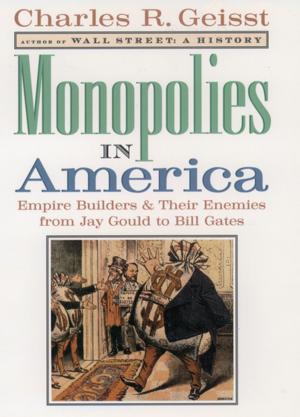Making Slavery History
Abolitionism and the Politics of Memory in Massachusetts
Nonfiction, History, Americas, United States, Revolutionary Period (1775-1800), 19th Century| Author: | Margot Minardi | ISBN: | 9780199888634 |
| Publisher: | Oxford University Press | Publication: | October 1, 2010 |
| Imprint: | Oxford University Press | Language: | English |
| Author: | Margot Minardi |
| ISBN: | 9780199888634 |
| Publisher: | Oxford University Press |
| Publication: | October 1, 2010 |
| Imprint: | Oxford University Press |
| Language: | English |
Making Slavery History focuses on how commemorative practices and historical arguments about the American Revolution set the course for antislavery politics in the nineteenth century. The particular setting is a time and place in which people were hyperconscious of their roles as historical actors and narrators: Massachusetts in the period between the Revolution and the Civil War. This book shows how local abolitionists, both black and white, drew on their state's Revolutionary heritage to mobilize public opposition to Southern slavery. When it came to securing the citizenship of free people of color within the Commonwealth, though, black and white abolitionists diverged in terms of how they idealized black historical agency. Although it is often claimed that slavery in New England is a history long concealed, Making Slavery History finds it hidden in plain sight. From memories of Phillis Wheatley and Crispus Attucks to representations of black men at the Battle of Bunker Hill, evidence of the local history of slavery cropped up repeatedly in early national Massachusetts. In fixing attention on these seemingly marginal presences, this book demonstrates that slavery was unavoidably entangled in the commemorative culture of the early republic-even in a place that touted itself as the "cradle of liberty." Transcending the particular contexts of Massachusetts and the early American republic, this book is centrally concerned with the relationship between two ways of making history, through social and political transformation on the one hand and through commemoration, narration, and representation on the other. Making Slavery History examines the relationships between memory and social change, between histories of slavery and dreams of freedom, and between the stories we tell ourselves about who we have been and the possibilities we perceive for who we might become.
Making Slavery History focuses on how commemorative practices and historical arguments about the American Revolution set the course for antislavery politics in the nineteenth century. The particular setting is a time and place in which people were hyperconscious of their roles as historical actors and narrators: Massachusetts in the period between the Revolution and the Civil War. This book shows how local abolitionists, both black and white, drew on their state's Revolutionary heritage to mobilize public opposition to Southern slavery. When it came to securing the citizenship of free people of color within the Commonwealth, though, black and white abolitionists diverged in terms of how they idealized black historical agency. Although it is often claimed that slavery in New England is a history long concealed, Making Slavery History finds it hidden in plain sight. From memories of Phillis Wheatley and Crispus Attucks to representations of black men at the Battle of Bunker Hill, evidence of the local history of slavery cropped up repeatedly in early national Massachusetts. In fixing attention on these seemingly marginal presences, this book demonstrates that slavery was unavoidably entangled in the commemorative culture of the early republic-even in a place that touted itself as the "cradle of liberty." Transcending the particular contexts of Massachusetts and the early American republic, this book is centrally concerned with the relationship between two ways of making history, through social and political transformation on the one hand and through commemoration, narration, and representation on the other. Making Slavery History examines the relationships between memory and social change, between histories of slavery and dreams of freedom, and between the stories we tell ourselves about who we have been and the possibilities we perceive for who we might become.















